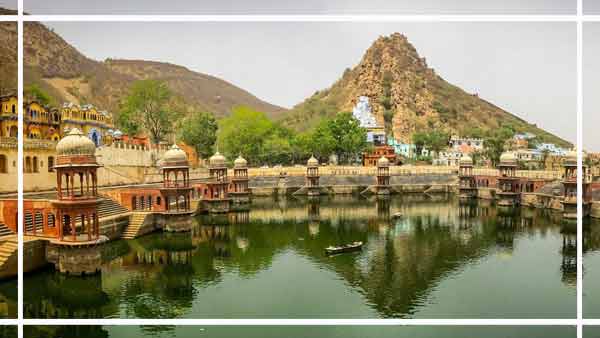Alwar Destination is one of Rajasthan ‘s oldest Kingdoms. A mythological belief persists that Matsya Desh, where the Pandavas spent their 13th year of exile, was known as this region. It was founded by Maharaja Alaghraj in 1049 and became a part of Virat Nagar in 1500 BC. Earlier, a number of Rajput lineages ruled Alwar-Nikumbh Rajputs, Yaduvanshi Rajputs, Badgujar Rajputs, and Naruka. Even the Bharatpur Marathas and Jats ruled the region, albeit for a very short time. Rao Partap Singh, a brave Rajput soldier who conquered the Alwar Fort, laid down the foundation for modern Alwar Destination.
The state merged with three princely states on March 1948-Bharatpur, Dholpur, and Karauli-and created the Matsya Union. As other popular travel destinations in Rajasthan, Alwar Destination is also known for its historic monuments, which are the region ‘s famous sightseeing spots too. The most popular in forts and palaces are Bala Qila, City Palace, Fateh Jung Tomb, Purjan Vihar and Vijay Mandir Palace. Alwar is a popular pilgrimage destination. There are multiple shrines like Tijara Jain Temple, Neelkanth Temple, Bhartrihari Temple, and Narayani Mata Temple in every nook and corner of the town. Some popular tourist spots in Alwar, mostly palaces, are transforming into resorts like Neemrana Fort and Hill Fort Kesroli, offering excellent accommodation options and making tourists feel like a royal Alwar Destination.
The large rooms that preserve the beauty of the bygone age, and pamper you with modern technology, are perfect for body and soul detoxification. Alwar is renowned not only for its historical sites but also for the Sariska Tiger Reserve. Sariska National Park is a popular attraction a few kilometers from Alwar Destination, and is also known for its Jeep safari. Tourists will see animals such as caracal, stripped hyena, golden jackal, leopard, jungle cat, four-cornered antelope here. Food lovers can try the soft and creamy Kalakand (Milk-Cake), which has highlighted city on India ‘s map, on Alwar tour.
Alwar Destination Tourists will enjoy Kulfi with rabri, Gulab jamun, Samosa, Kachori and others. This town is full of magnificent forts, historic museums and tranquil lakes. Alwar tourism has preserved this site’s unrivaled vibrancy and natural beauty. And to get a better understanding of the region, go through our Alwar tour guide, which gives you full details about places to visit, things to do, holiday packages, cultural highlights, travel tips and the best accommodation options in Alwar Destination, Rajasthan.
Major Attractions in Alwar – Alwar Destination
Bala Quila / Alwar Fort
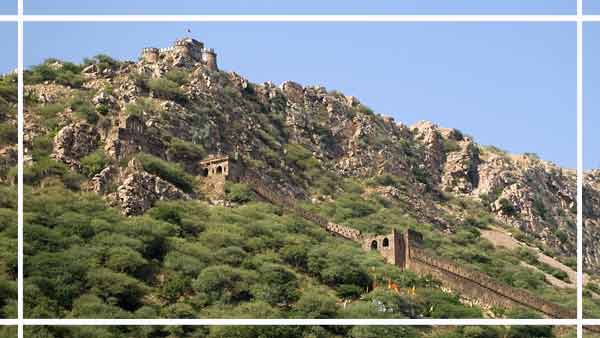
Bala Quila also known as Alwar Fort is a large fort in Alwar, Rajasthan state, at a distance of 10.5 km from Alwar Jn Railway Station. It is located 300 m above the town of Alwar on a hill in the Aravalli Range.
Bala Quila is the oldest structure of Alwar, meaning the Young Fort. It was built in 1550 AD, by Hasan Khan Mewati. It went into the possession of Mughals, Marathas, Jats and Kachwaha Rajputs during the following centuries. Babur, the emperor of Mughal, had spent a night here, and also took away a large amount of treasure to give his son Humayun. Later Jahangir stayed there for some time when his father, Akbar, banished him for planning to murder one of his courtesans, Abul Fazal. His place of stay came to be called Salim Mahal. In 1775 AD it was captured and laid the base of Alwar city by Kachwaha Rajput Pratap Singh Alwar Destination.
The fort is about 1.5 km wide and is 5 km long. The Fort has 6 gates, Jai Pol, Laxman Pol, Suraj Pol, Chand Pol, Andheri Gate and Krishna Gate, among others.
City Palace
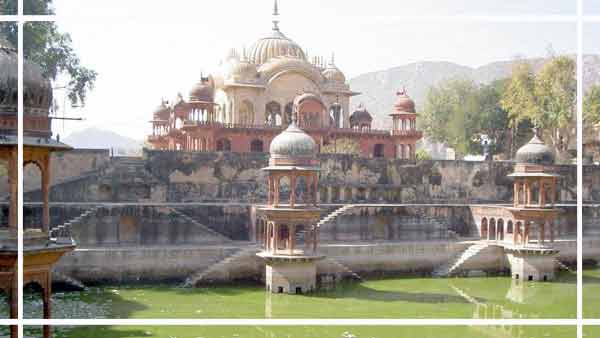
City Palace is located in the foothills of Aravalli, right under Bala Quila in Alwar, at a distance of 3.5 km from Alwar Jn Railway Station.
The town palace was designed in the year 1793 by Raja Bakhtayar Singh. The building is a fine blend of architecture from Mughal to Rajput. The city palace architecture consists of marble pavilions in the wide central courtyard, with lotus-shaped designs. An elevated door-shaped pavilion is installed within the Vinay Vilas Mahal, which depicts Rajput kingdoms’ pride and honour.
This palace is a two-story building now occupied by government on the ground floor for various offices and on the floor above, the Alwar Government Museum. Some antique Mughal and Rajput paintings dating back to the 18th and 19th centuries are on display in the museum. The museum has a rich collection of Persian, Arabic, Urdu, and Sanskrit manuscripts, some rare and antique. Among the most prominent of those manuscripts are Bostan, Waqiat-e-Babri.
Siliserh Lake & Palace
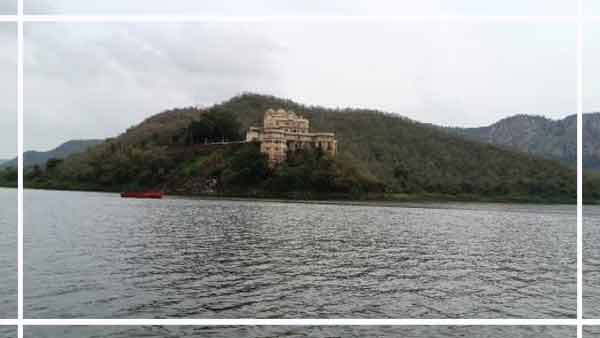
Siliserh Lake and Palace is located on Alwar-Sariska road, at a distance of 16 km from Alwar Junction Railway Station. In 1845 Maharaja Vinay Singh of Alwar built Siliserh Lake Palace for her beloved wife Sila. Maharaja ‘s built lake and reservoir was the main source of water for Alwar town.
The majestic Siliserh Lake near the Palace stretches over an area of 10.5 square kilometers and forms the backdrop of the Siliserh Palace, now converted into a heritage hotel. The Siliserh Lake has a number of domed cenotaphs and the majestic slopes of the Aravalli range are circumscribed there. Two earthen dams were constructed to store the waters of a tiny Ruparel River tributary in the lake.
Siliserh Lake ‘s location is picturesque, and it is home to many migratory birds. Large numbers of visitors visit the serene lake for boating, sailing, and fishing.
Sariska Tiger Reserve / Sariska National Park
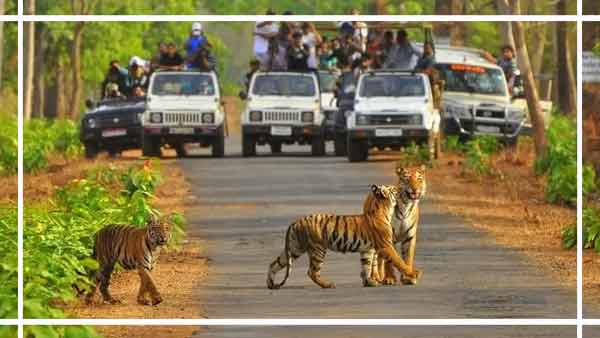
Sariska Tiger Reserve is a famous national park and wildlife refuge located in Sariska, in the Alwar district of Rajasthan, at a distance of 36 km from Alwar, 111 km from Jaipur & 195 km from New Delhi. It is one of the best places to visit near Delhi & also one of Rajasthan’s famous tourist spots.
Sariska Tiger Reserve is one of India’s leading National Parks. Formerly a Maharaja of Alwar hunting ground, the park was declared a wildlife reserve in 1955 and then a Tiger reserve under Project Tiger in 1978. Sariska is one of the country’s 28 Tiger reserves, and is spread over an area of 850 sq. Kilometers with an estimated core area of 500 sq. Kilometre. The topography of Sariska includes grasslands, dry deciduous forests, cliffs and rocky landscapes. The mountain ranges of Aravalli surround the park which is surrounded by dense forests.
Bhangarh Fort
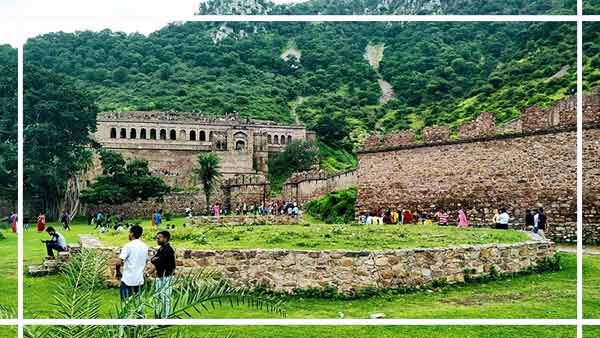
At a distance of 75 km from Jaipur, 87 km from Alwar & 247 km from New Delhi, Bhangarh Fort is one of Rajasthan ‘s medieval forts located in Alwar district town of Bhangarh.
The city of Bhangarh was founded during Bhagwant Das rule in 1573. The Bhangarh fort was built in 1613 by Madho Singh, who was the son of the great Mughal General Man Singh of Amber. The fort is considered one of India’s most haunted locations. Owing to the numerous ghostly encounters and occurrences in the fort grounds, villages have sprung up far away from the fort. India’s Archeological Survey has banned the entry of locals and visitors to the fort at night Alwar Destination.
It is assumed that the fort and Bhangarh town have been haunted for several centuries. The palace has many legends attached. According to one myth, a magician Guru Balu Nath cursed the man, who had approved the building of the man on one condition that the town.
Narayani Mata Temple
Narayani Mata Temple is approximately 80 km from Rajasthan’s main city of Alwar, and 14 km from Amanbagh. It is located on the edge of the celebrated Sariska National Park.
Sain Samaj’s only temple in India, its sanctity resembles temples at Mount Abu, Pushkar and Ramdevra. Narayani Mata is believed to be the place where the first sati (immolation by fire) incident occurred prior to Rani Sati. According to the myth, Narayani was going to her place of in-laws with her husband after marriage. She was bitten by a snake on the way, and was buried. She was deep in sorrow and prayed to Lord Shiva sitting beside his unlit funeral pyre to give him back his life or allow her to commit sati with her husband. Lord Shiva replied to her prayer by sending a holy fire to consume them both. Both Rani Sati & Narayani Mata are similar according to local belief. Nearby there is a sacred spring which adds beauty to the temple.
In this temple baniyas (Agarwals) are not permitted. The priest is from caste Meena. Every year before 1993 there used to be a major fair organized by the locals at the Temple site, which was banned by the late Mr. Rajeev Gandhi who was the prime minister at that time in the country to ban ‘sati.’ You may visit this sacred spot, have a tea-break en route to the fort and ruins of Bhangarh.

